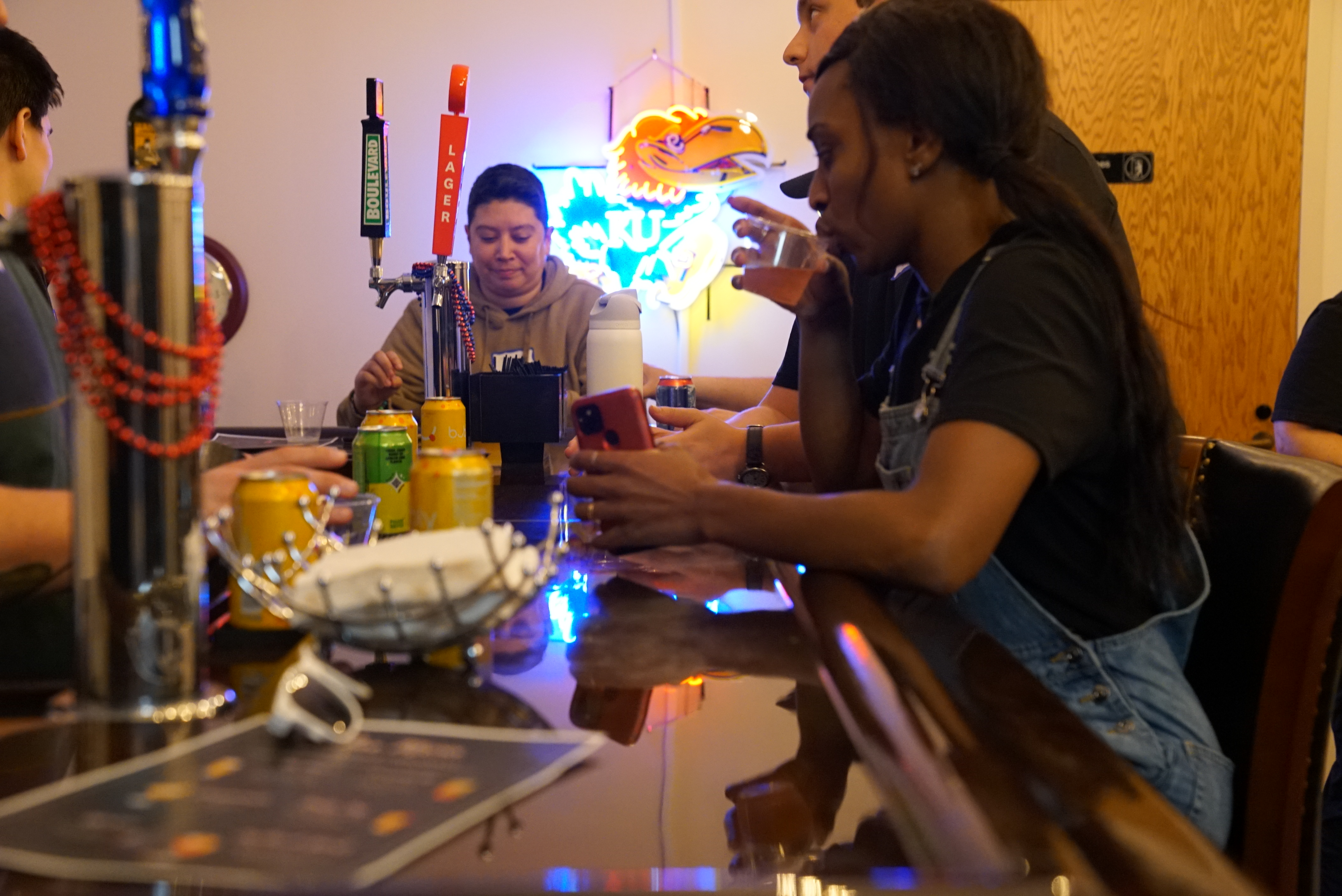Cofrin Logan bar lab plays host to SAPEC 'Barstander' intervention training session
Two patrons are sitting in a bar. One of them begins harassing the waitstaff. The situation escalates over time as you and your friend observe from nearby.
So, here’s the question: What do you do?
This situation played out on April 18-19 between actors and student trainees in the alcohol administration laboratory, or the bar lab, of the Cofrin Logan Center for Addiction and Treatment.
Led by the student-based Sexual Assault Prevention and Education Center (SAPEC), the “Barstander” training sessions were part of Jayhawks Give a Flock, designed to provided participants with skills and tools to identify behavior that puts others at risk for violence, victimization, or perpetration.
Jacyln Carpenter, SAPEC Education Program Coordinator, said the event was a response to feedback from students and facilitators, who wanted more opportunities to apply what they learned from training.
“We wanted to create an environment where they could build their confidence in intervening in scenarios that haven’t quite escalated yet,” Carpenter said.
The goals of the event were to help students identify warning signs of escalating behavior, build their confidence as bystanders and to allow them to fail safely at trying out different intervention strategies.
SAPEC Director Jen Brockman suggested using the Life Span Institute center’s bar lab, which is designed to look like a bar for the purpose of addiction research. She and her staff discussed ideas for collaboration with the Cofrin Logan Center Director Richard Yi, way back before the Covid-19 pandemic hit.
In fall 2022, they met again, and “We were very happy to make our space available,” Yi said.
A big advantage to using the bar lab over an actual bar, Yi said, is that the lab allows for more control over an environment than an off-site bar would allow. The lab looks like a real bar — with taps and bottles displayed that seemingly advertise a variety of alcohol — but the location is designed to allow observation, with a separate room for discussion afterward.
“The Cofrin Logan Center bar lab has been so intentionally set up that it allowed for an immersive experience in one room, and a space to properly debrief in the next,” Carpenter saids “Hosting this program in a standard bar would not have allowed the duality that this space provides.”
Carpenter said the reaction from the participating students was overwhelmingly positive, and they hope to continue to expand the intervention training program — likely making use of the bar lab with help from the Cofrin Logan Center.
“The background of research their office conducts and general enthusiasm regarding our project confirmed for us that this was the best fit,” Carpenter said.
View a gallery of images from the bystander intervention training.
